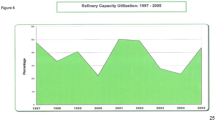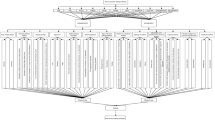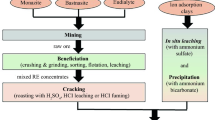Abstract
Strategic mine planning centers on solving cut-off grade selection, capacity planning, and block sequencing. Even though significant knowledge has been accumulated on mine planning over the last decades, there is still potential to add value to mineral sourcing by addressing various aspects. To this end, this paper addresses two issues. The effects of (1) grade/metal distribution within a mineral deposit and (2) the economies of scale (EoS) are explored in cut-off grade selection and capacity planning. In doing so, the interdependency between cut-off grade selection and capacity planning is also considered. A case study is implemented on a metallic deposit whose grade distribution exhibits lognormal distribution to detect if grade/metal distribution influences cut-off grade selection. Also, based on the same ore tonnage and metal quantity, six different datasets are generated with different shape and scale factors. The research outcomes indicate that deposits with lower shape and scale factors of lognormal distribution are more sensitive to metal price and discount rate changes because slight cut-off grade variations significantly change net present value (NPV). While the NPV of the deposit with the largest shape factor is $3,208,112,841 with a cut-off grade of 0.058 oz/tonne, the NPV of the deposit with the smallest shape factor is $93,617,240 with a cut-off grade of 0.027 oz/tonne. Furthermore, the case study is directed to investigate the effect of EoS on a project’s value, with a specific emphasis on the ratio of variable cost to total cost (capacity factor). Two different regression analyses are conducted based on the proposed model for optimal capacity planning and cut-off grade selection, respectively. In the first one, the absolute standardized beta values for EoS of mining and mineral processing costs are 0.736 and 0.425, meaning that capacity planning is highly sensitive to the EoS of mining and mineral processing operating costs. Meanwhile, the absolute standardized beta value for grade variability is 0.054 which means that the effects of grade variability and metal distribution are almost negligible for capacity planning. However, EoS is the most critical variable for capacity optimization. In the second regression analysis, the standardized beta values for grade variability and EoS of mineral processing operating cost are 0.573 and 0.522, so their effects on cut-off grade selection become vital.
















Similar content being viewed by others
Data Availability
The major data supporting the findings of this study are provided within the article.
Code Availability
There is no public code available.
References
Kumral M (2013) Multi-period mine planning with multi-process routes. Int J Min Sci Technol 23(3):317–321. https://doi.org/10.1016/j.ijmst.2013.05.001
Jackson D (1998) Profitability, mechanization and economies of scale. Routledge, London, UK
Bozorgebrahimi A, Hall RA, Morin MA (2005) Equipment size effects on open pit mining performance. Int J Surf Min Reclam Environ 19(1):41–56. https://doi.org/10.1080/13895260412331326821
Bozorgebrahimi E, Hall RA, Blackwell GH (2003) Sizing equipment for open pit mining – a review of critical parameters. Min Technol 112(3):171–179. https://doi.org/10.1179/037178403225003591
Abdel Sabour SA (2002) Mine size optimization using marginal analysis. Resour Policy 28(3–4):145–151. https://doi.org/10.1016/j.resourpol.2004.01.001
Smith LD (1997) A critical examination of the methods and factors affecting the selection of an optimum production rate. CIM Bull 90(1007):48–54
Moradi Afrapoli A, Tabesh M, Askari-Nasab H (2019) A stochastic hybrid simulation-optimization approach towards haul fleet sizing in surface mines. Min Technol 128(1):9–20. https://doi.org/10.1080/25726668.2018.1473314
Balci M, Kumral M (2022) Building an innovation strategy and culture on the structural characteristics of the mining industries. Resour Policy 78:102936. https://doi.org/10.1016/j.resourpol.2022.102936
Mohtasham M, Mirzaei-Nasirabad H, Askari-Nasab H, Alizadeh B (2021) Truck fleet size selection in open-pit mines based on the match factor using a MINLP model. Min Technol 130(3):159–175. https://doi.org/10.1080/25726668.2021.1919374
Taylor HK (1986) Rates of working of mines-a simple rule of thumb. Inst Min Metall Trans 95:A203–A204
Smith LD (2016) Measuring mine life: a tribute to Hugh Taylor and his law. https://magazine.cim.org/en/standards/measuring-mine-life/. Accessed March 14 2024
Singer DA, Menzie WD, Long KR (1998) A simplified economic filter for open-pit gold-silver mining in the United States. U.S. Geol Surv, Open-File Report No 98–207, p 13
Singer DA, Menzie WD, Long KR (2000) A simplified economic filter for underground mining of massive sulfide deposits. U.S. Geol Surv. https://doi.org/10.3133/ofr00349
Long KR, Singer DA (2001) A simplified economic filter for open-pit mining and heap-leach recovery of copper in the United States. https://doi.org/10.3133/ofr01218
Long KR (2009) A test and re-estimation of Taylor’s empirical capacity–reserve relationship. Nat Resour Res 18(1):57–63. https://doi.org/10.1007/s11053-009-9088-y
Wellmer FW, Drobe M (2019) A quick estimation of the economics of exploration projects - rules of thumb for mine capacity revisited - the input for estimating capital and operating costs. Boletín Geológico y Minero 130(1):7–26. https://doi.org/10.21701/bolgeomin.130.1.001
Glanville R (1985) Optimum production rate for high-grade/low tonnage mines. The society of mining engineers of the american institute of mining, metallurgical, and petroleum engineers, Inc:114–125
Lasserre P (1985) Capacity choice by mines. Can J Econ 18(4):831–842. https://doi.org/10.2307/135094
Lizotte Y, Elbrond J (1982) Choice of mine-mill capacities and production schedules using open-ended dynamic programming. CIM Bull 75(839):154–163
Wells HM (1978) Optimization of mining engineering design in mineral valuation. Min Eng 30(12):1676–1684
Cavender B (1992) Determination of the optimum lifetime of a mining project using discounted cash flow and option pricing techniques. Min Eng 44(10):1262–1268
Tatman CR (2001) Production-rate selection for steeply dipping tabular deposits. Min Eng 53(10):62–64
Neingo PN, Tholana T, Nhleko AS (2018) A comparison of three production rate estimation methods on South African platinum mines. Resour Policy 56:118–124. https://doi.org/10.1016/j.resourpol.2017.11.006
Elkington T, Durham R (2011) Integrated open pit pushback selection and production capacity optimization. J Min Sci 47(2):177–190. https://doi.org/10.1134/S1062739147020055
Elkington T, Grobler F (2010) Production capacity optimisation in the presence of grade uncertainty. In: Proceedings of the 19th International Symposium on Mine Planning and Equipment Selection (MPES 2010), Fremantle, WA, pp 43–53
Kizilkale AC, Dimitrakopoulos R (2014) Optimizing mining rates under financial uncertainty in global mining complexes. Int J Prod Econ 158:359–365. https://doi.org/10.1016/j.ijpe.2014.08.009
Rimélé A, Dimitrakopoulos R, Gamache M (2020) A dynamic stochastic programming approach for open-pit mine planning with geological and commodity price uncertainty. Resour Policy 65:101570. https://doi.org/10.1016/j.resourpol.2019.101570
McCarthy PL (2010) Setting plant capacity. Mineral Process Ext Metall 119(4):184–190. https://doi.org/10.1179/037195510x12816242170979
Lane KF (1988) The economic definition of ore: cut-off grades in theory and practice. COMET Strategy Pty Ltd
Rendu J-M (2014) An introduction to cut-off grade estimation, 2nd edn. Society for Mining, Metallurgy and Exploration
Ahmadi MR (2018) Cutoff grade optimization based on maximizing net present value using a computer model. J Sustain Min 17(2):68–75. https://doi.org/10.1016/j.jsm.2018.04.002
Ahmadi MR, Shahabi RS (2018) Cutoff grade optimization in open pit mines using genetic algorithm. Resour Policy 55:184–191. https://doi.org/10.1016/j.resourpol.2017.11.016
Asad MWA (2005) Cutoff grade optimization algorithm for open pit mining operations with consideration of dynamic metal price and cost escalation during mine life. In: Dessureault S, Ganguli R, Kecojevic V, Dwyer JG (eds) Proceedings of the 32nd International Symposium on the Application of Computers and Operations Research in the Mineral Industry (APCOM 2005). Taylor & Francis Group, Tucson, USA, pp 273–277. https://doi.org/10.1201/9781439833407.pt5
Dagdelen K, Asad MWA (1997) Multi-mineral cutoff grade optimization with option to stockpile. SME Annual Meeting:Preprint Number 97186
Hustrulid W, Kuchta M, Martin R (2013) Open pit mine planning & design, 3rd edn. CRC Press, Boca Raton, FL
Asad MWA, Topal E (2011) Net present value maximization model for optimum cut-off grade policy of open pit mining operations. J South Afr Inst Min Metall 111(11):741–750
Gholamnejad J (2009) Incorporation of rehabilitation cost into the optimum cut-off grade determination. J South Afr Inst Min Metall 108(2):89–94
Minnitt RCA (2004) Cut-off grade determination for the maximum value of a small Wits-type gold mining operation. J South African Inst Min Metall 104(5):277–283
Osanloo M, Ataei M (2003) Using equivalent grade factors to find the optimum cut-off grades of multiple metal deposits. Miner Eng 16(8):771–776. https://doi.org/10.1016/s0892-6875(03)00163-8
Osanloo M, Rashidinejad F, Rezai B (2008) Incorporating environmental issues into optimum cut-off grades modeling at porphyry copper deposits. Resour Policy 33(4):222–229. https://doi.org/10.1016/j.resourpol.2008.06.001
Gholamnejad J (2008) Determination of the optimum cutoff grade considering environmental cost. J Int Environ Appl Sci 3(3):186–194
Abdollahisharif J, Bakhtavar E, Anemangely M (2012) Optimal cut-off grade determination based on variable capacities in open-pit mining. J South Afr Inst Min Metall 112:1065–1069
Asad MWA, Dimitrakopoulos R (2012) Optimal production scale of open pit mining operations with uncertain metal supply and long-term stockpiles. Resour Policy 37(1):81–89. https://doi.org/10.1016/j.resourpol.2011.12.002
Dagdelen K (1992) Cutoff grade optimization. In: Proceedings of the 23rd International Symposium on the Application of Computer and Operations Research in the Mineral Industry. Society for Mining, Metallurgy, and Exploration, Tucson, USA, pp 157–165
Asad MWA (2007) Optimum cut-off grade policy for open pit mining operations through net present value algorithm considering metal price and cost escalation. Eng Comput 24(7):723–736. https://doi.org/10.1108/02644400710817961
Cetin E, Dowd PA (2016) Multiple cut-off grade optimization by genetic algorithms and comparison with grid search method and dynamic programming. J Southern African Inst Min Metall 116(7):681–688. https://doi.org/10.17159/2411-9717/2016/v116n7a10
Thompson M, Barr D (2014) Cut-off grade: a real options analysis. Resour Policy 42:83–92. https://doi.org/10.1016/j.resourpol.2014.10.003
He Y, Zhu K, Gao S, Liu T, Li Y (2009) Theory and method of genetic-neural optimizing cut-off grade and grade of crude ore. Expert Syst Appl 36(4):7617–7623. https://doi.org/10.1016/j.eswa.2008.09.018
Asad MWA, Dimitrakopoulos R (2013) A heuristic approach to stochastic cutoff grade optimization for open pit mining complexes with multiple processing streams. Resour Policy 38(4):591–597. https://doi.org/10.1016/j.resourpol.2013.09.008
Ahmadi MR, Bazzazi AA (2019) Cutoff grades optimization in open pit mines using meta-heuristic algorithms. Resour Policy 60:72–82. https://doi.org/10.1016/j.resourpol.2018.12.001
Ahmadi MR, Bazzazi AA (2020) Application of meta-heuristic optimization algorithm to determine the optimal cutoff grade of open pit mines. Arabian J Geosci 13(5). https://doi.org/10.1007/s12517-020-5104-7
Khan A, Asad MWA (2019) A method for optimal cut-off grade policy in open pit mining operations under uncertain supply. Resour Policy 60:178–184. https://doi.org/10.1016/j.resourpol.2018.12.003
Krautkraemer JA (1988) The cut-off grade and the theory of extraction. Canadian J Econ 21(1):146–160. https://doi.org/10.2307/135216
Appiah PB, Sturgul JR (1995) Practical aspects of the optimal mine operating strategy for a fluctuating price. Int J Surf Min Reclam Environ 9(4):179–185. https://doi.org/10.1080/09208119508964746
Shinkuma T (2000) A generalization of the Cairns-Krautkraemer model and the optimality of the mining rule. Resour Energy Econ 22(2):147–160. https://doi.org/10.1016/S0928-7655(99)00020-2
Allais M (1957) Method of appraising economic prospects of mining exploration over large territories: Algerian Sahara case study. Manage Sci 3(4):285–347
Singer DA (1993) Basic concepts in three-part quantitative assessments of undiscovered mineral resources. Nonrenewable Resour 2(2):69–81. https://doi.org/10.1007/BF02272804
Armstrong M, Berckmans A (1996) QTz curves for two skew distributions. Min Technol: Section A 105(3):158–162
Zhang Q, Shoji T, Kaneda H (2004) Grade-tonnage models of copper deposits in China. Shigen-to-Sozai 120(1):19–24. https://doi.org/10.2473/shigentosozai.120.19
Singer DA (2013) The lognormal distribution of metal resources in mineral deposits. Ore Geol Rev 55:80–86. https://doi.org/10.1016/j.oregeorev.2013.04.009
Wellmer FW (1998) The use of the lognormal distribution. In: Large D editor. Statistical Evaluations in Exploration for Mineral Deposits. Springer, Heidelberg, Berlin, pp 67–94. https://doi.org/10.1007/978-3-642-60262-7_9
Gardner JD (1986) Mine evaluation-design optimization. In: Ramani RV, editor. 19th Application of Computers and Operation Research in the Mineral Industry. Littleton, Colorado. Society for Mining, Metallurgy, and Exploration
Gardner JD (1981) Concepts of mine evaluation and design optimization. The University of Utah, Salt Lake City, UT, p 339
Lazzari L (2017) Statistical analysis of corrosion data. In: Lazzari L editor. Engineering Tools for Corrosion: Design and Diagnosis. Woodhead Publishing, pp 131–148. https://doi.org/10.1016/B978-0-08-102424-9.00008-2
Dysert L (2005) So you think you’re an estimator? Cost Engineering. 47(9):30-35
Changsheng J, Youdi Z (1999) Optimization model of surface mine production rate. Transactions of Society for Mining, Metallurgy, and Exploration Inc 306
Wellmer FW, Scholz R (2018) What is the optimal and sustainable lifetime of a mine? Sustainability 10(2):480. https://doi.org/10.3390/su10020480
Pascoe RD (1992) Capital and operating costs of minerals engineering plants - a review of simple estimation techniques. Miner Eng 5(8):883–893. https://doi.org/10.1016/0892-6875(92)90255-8
Dowd PA (1993) Geostatistical simulation. Course notes for the MSc in mineral resource and environmental geostatistics, University of Leeds
Funding
This research was supported by the Natural Sciences and Engineering Research Council of Canada (NSERC) (Fund number: 236482—NSERC RGPIN-2019–04763). The authors are grateful for this support.
Author information
Authors and Affiliations
Corresponding author
Ethics declarations
Conflict of Interest
The authors declare no competing interests.
Additional information
Publisher's Note
Springer Nature remains neutral with regard to jurisdictional claims in published maps and institutional affiliations.
Article Highlights
• Cut-off grade selection and capacity planning are essential for strategic mine planning.
• This paper aims to demonstrate the impacts of grade/metal distribution within a mineral deposit and the economies of scale on cut-off grade selection and capacity planning.
• Lognormal distribution parameters and capacity factors are crucial to quantify grade/metal variability and the economies of scale, respectively.
• While the impact of the economies of scale is evident in both cut-off grade selection and capacity planning, grade/metal distribution only affects cut-off grade selection.
Rights and permissions
Springer Nature or its licensor (e.g. a society or other partner) holds exclusive rights to this article under a publishing agreement with the author(s) or other rightsholder(s); author self-archiving of the accepted manuscript version of this article is solely governed by the terms of such publishing agreement and applicable law.
About this article
Cite this article
Balci, M., Kumral, M. Impacts of Grade Distribution and Economies of Scale on Cut-off Grade and Capacity Planning. Mining, Metallurgy & Exploration (2024). https://doi.org/10.1007/s42461-024-00982-8
Received:
Accepted:
Published:
DOI: https://doi.org/10.1007/s42461-024-00982-8




